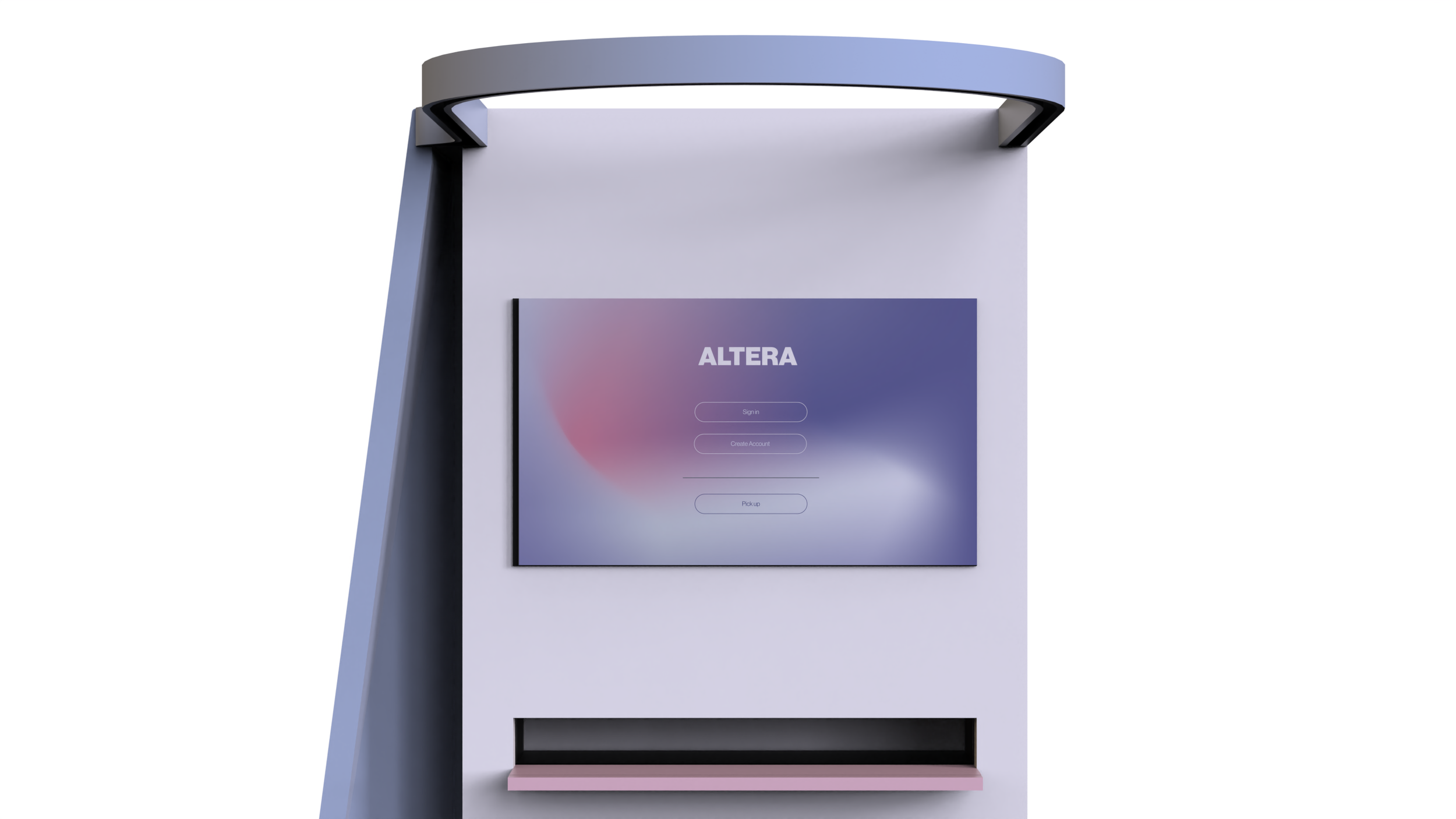SLOW FASHION USER EXPERIENCE
HUMAN CENTERED DESIGN
GENERATIVE AI
Stock Footage Courtesy of Tom Fisk and Cottonbro Studios via Pexels
Stock Images Courtesy of Tom Fisk via Pexels
Fall 2023 Studio Project
Collaborators:
Elizabeth Marmo
Madeleine Tran
Angie Bai
INTRODUCTION
The U.S. produces on average…
3,400,000,000lbs
EVERY YEAR in textile waste
Adapted from epa.gov
fast fashion is the antithesis of longevity in clothing purchases
THE CONCEPT
Revive. Repurpose. Reinvent.
ALTERA is an interactive kiosk which allows the user to scan an item from their wardrobe and explore various alterations for that item through a robust generative ai database, and then have that item be altered according to their selections.
The digital interface builds off the mental model of a dress-up game for its layout, and enables the user to view what the final product would look like prior to alteration. The ALTERA system is a novel tailoring experience that adapts to Gen Z attitude and culture.
STORYBOARD
SPECIFICATIONS
Kiosk Details
ALTERA kiosks would be located within shopping malls and as standalone spaces with close proximity to college campuses. The interiors of the locations would have multiple kiosks interspersed within it so multiple people can access the system simultaneously.
Dimensions
An extension to the concept would be to place the kiosks within or near thrift stores, so people can take their thrifted clothing to have it fit and styled to suit their tastes. The clothing item inserted into the system would be transported to a central location afterward.
Item Scan Tech
The kiosk contains a scanner and conveyor belt system which creates the basis for a generative AI visualization. Once scanned, the item gets tagged and dropped into the bin at the base of the kiosk.
Smart Measurement
The smart measuring system is based off pre-existing measuring tape technology as used in FitIndex. The user would be required to take measurements of themselves for certain alteration selections, so this system would streamline the process.
So…how did we get here?
PRIMARY RESEARCH INSIGHTS
The key insights from 17 interviews, 154 survey responses, and several observational studies are that…
Younger shoppers value streamlined digital interaction driven shopping.
Shoppers prefer seeing photos and videos showcasing a product to get a feel for it before purchase.
Tailoring clothing is not part of the Gen Z clothing purchase culture
PRIMARY PERSONA + JOURNEY
The Independent’s Journey
The Independent values convenience and an organizational structure while shopping. They prefer shopping primarily online, but when in person they use self checkout and other interactive technology to keep their time spent in store at a minimum.
They are 20-22 year old college students who work part time jobs and live in dorms or in off-campus student apartments. They typically commute using a bicycle or via foot.
“It’s more convenient to shop online for me because I get stressed out in person”
Need Hierarchy
ADDRESSING THE NEED + IDEATION
Design an interactive retail environment that encourages the user to personalize and repair both their existing and new garments in order to reduce overconsumption and encourage self-expression.
How might we…
Facilitate longevity in fast fashion clothing purchases
Streamline digital and in person interactions efficiently to reduce information overload
PROTOTYPE CONSTRUCTION + TESTING
We ran several rounds of prototype testing to understand how best to design the interface as well as the physical kiosk itself. The testable prototype involved a mockup in Figma which was projected onto a wall. Testers were able to use a pen to interact with the “screen“ and performed a mock alteration selection. They were asked to scan a clothing item, take body measurements, select their desired service, and checkout.
Our process involved usability testing and rapid iterative testing, as we tweaked aspects of the design between testing rounds. We iterated our whole design thrice based on feedback given to us in interviews and observations during the testing. The data gleaned by testing each iteration led us to creating a refined prototype catered specifically to our user needs.






















